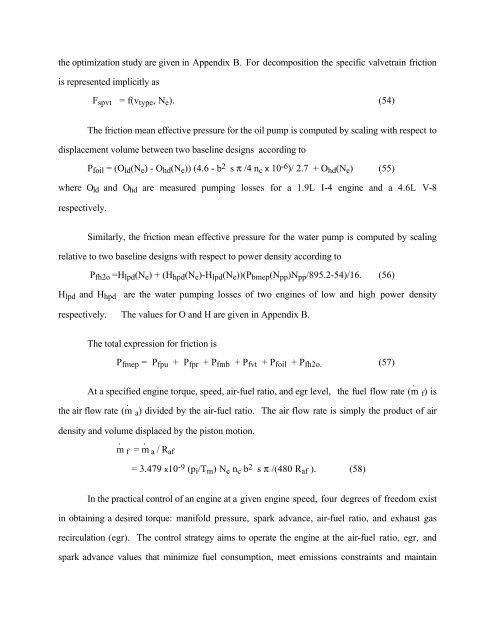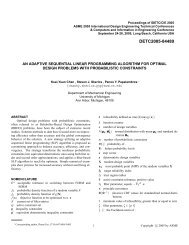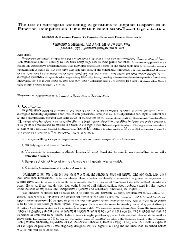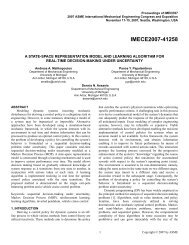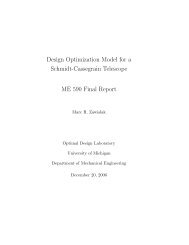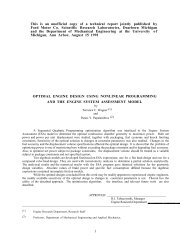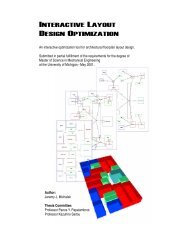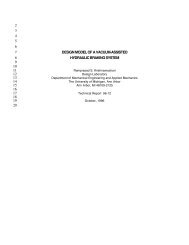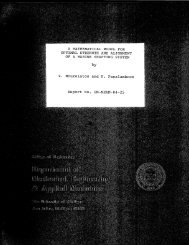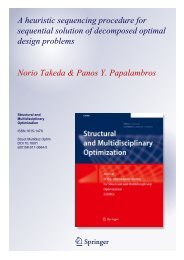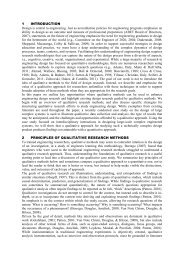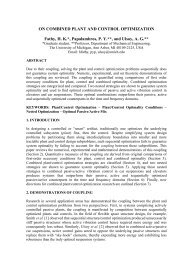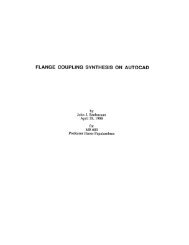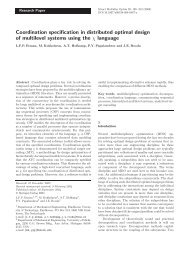Decomposition Analysis of an Automotive Powertrain Design ...
Decomposition Analysis of an Automotive Powertrain Design ...
Decomposition Analysis of an Automotive Powertrain Design ...
Create successful ePaper yourself
Turn your PDF publications into a flip-book with our unique Google optimized e-Paper software.
the optimization study are given in Appendix B. For decomposition the specific valvetrain friction<br />
is represented implicitly as<br />
F spvt = f(v type , N e ). (54)<br />
The friction me<strong>an</strong> effective pressure for the oil pump is computed by scaling with respect to<br />
displacement volume between two baseline designs according to<br />
P foil = (O ld (N e ) - O hd (N e )) (4.6 - b 2 s π /4 n c x 10 -6 )/ 2.7 + O hd (N e ) (55)<br />
where O ld <strong>an</strong>d O hd are measured pumping losses for a 1.9L I-4 engine <strong>an</strong>d a 4.6L V-8<br />
respectively.<br />
Similarly, the friction me<strong>an</strong> effective pressure for the water pump is computed by scaling<br />
relative to two baseline designs with respect to power density according to<br />
P fh2o =H lpd (N e ) + (H hpd (N e )-H lpd (N e ))(P bmep (N pp )N pp /895.2-54)/16. (56)<br />
H lpd <strong>an</strong>d H hpd are the water pumping losses <strong>of</strong> two engines <strong>of</strong> low <strong>an</strong>d high power density<br />
respectively. The values for O <strong>an</strong>d H are given in Appendix B.<br />
The total expression for friction is<br />
P fmep = P fpu + P fpr + P fmb + P fvt + P foil + P fh2o. (57)<br />
At a specified engine torque, speed, air-fuel ratio, <strong>an</strong>d egr level, the fuel flow rate (ṁ f) is<br />
the air flow rate (ṁ a) divided by the air-fuel ratio. The air flow rate is simply the product <strong>of</strong> air<br />
density <strong>an</strong>d volume displaced by the piston motion,<br />
.<br />
m f = ṁ a / R af<br />
= 3.479 x10 -9 (p i /T m ) N e n c b 2 s π /(480 R af ). (58)<br />
In the practical control <strong>of</strong> <strong>an</strong> engine at a given engine speed, four degrees <strong>of</strong> freedom exist<br />
in obtaining a desired torque: m<strong>an</strong>ifold pressure, spark adv<strong>an</strong>ce, air-fuel ratio, <strong>an</strong>d exhaust gas<br />
recirculation (egr). The control strategy aims to operate the engine at the air-fuel ratio, egr, <strong>an</strong>d<br />
spark adv<strong>an</strong>ce values that minimize fuel consumption, meet emissions constraints <strong>an</strong>d maintain


